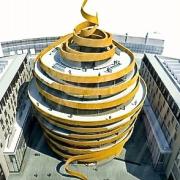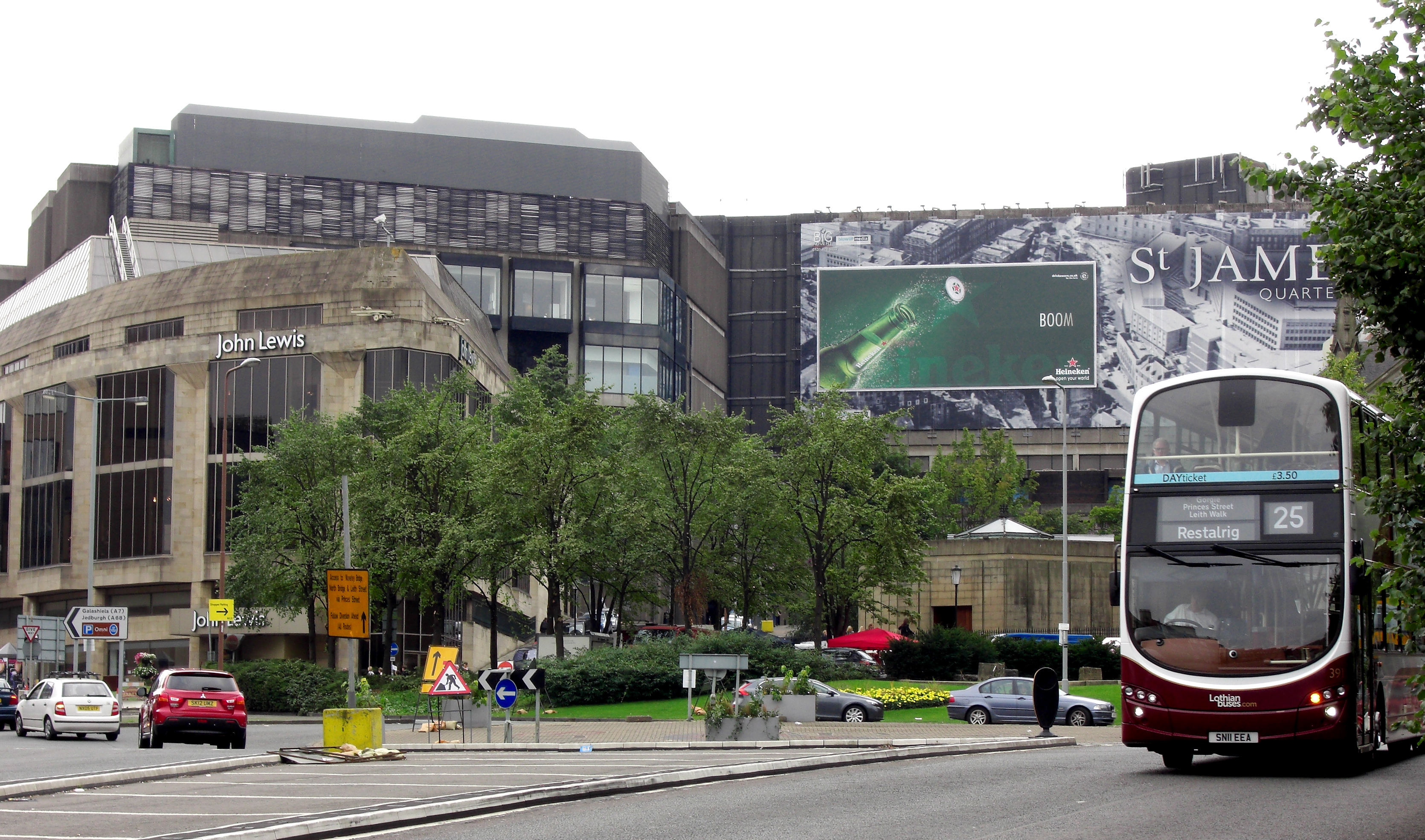
A Q&A session for local residents was held at the St Mary's Cathedral Parish Centre on 1 October, to enable the public to understand the project and allow those who will be affected by the disruption to air any concerns, writes Caroline Roussot, who was present.
Martin Perry of the site owner THRE (Henderson) and Mike Prentice of CBRE represented the developers.
A brief film was shown, explaining the historic context of the site, its relationship to the James Craig New Town grid, and the improvements over the old development that THRE were seeking to achieve. The new development is to be mixed use, to include: 850,000 sq.ft of shopping; a high-end cinema; 250 residential flats; bars and restaurants; a 5-star hotel and an apart-hotel; and three levels of car parking.
Mr Perry then spoke briefly, in particular emphasising:
- the integration of the scheme with Multrees Walk, improved pedestrian links from the centre to Picardy Place, Princes Street and St Andrew Square; and
- the refound symmetry (despite the awkward angle at which the site is set to the rest of the grid): the centrepiece of the development, the 'iconic hotel' to be centred on the George Street axis. The iconic hotel (more colloquially referred to, at best, locally as the Walnut Whip) is to be a 'memorable addition to the Edinburgh roofscape', bringing 'unity and prestige' back to the eastern city centre.
Mr Perry emphasised that Henderson were not classic property developers, but investors, in effect a pension fund, investing for the long term and therefore as keen as the people of Edinburgh are, to see a high-quality scheme built.
Works are scheduled to start around Easter 2016 with a view to a Spring 2020 opening. THRE will attempt to minimise disruption by bringing in materials and taking away waste, by road via Leith, at the quietest times for traffic.
The Council and Scottish Government will be financing a major programme of public realm works in the surrounding area, to include street lighting, cobbles, landscaping and outdoor seating. This will be carried out by THRE as part of the overall project, and the costs recovered from local and national government.
Questions were invited from the floor.
Most questions related to the impact on the Cathedral of the works:
A: St Andrew's Hall is to be taken over by THRE who have plans to locate the Centre Management Suite in it. The forecourt will contain some sort of café / restaurant.
Q: Will disabled access to the Cathedral (e.g. dedicated parking spaces etc.) be maintained throughout the works?
A: THRE will be monitoring this and doing their best to ensure that good access is maintained (currently envisaged that this will be via single yellow lines on Little King Street, which blue badge holders can park on).
Q: How will information about forthcoming transport disruption be communicated?
A: A weekly newsletter will be produced; people will be able to sign up to receive it by email each week.

Q: How will the new development link up with the proposed new transport hub (tram / bus interchange) proposed for Picardy Place?
A: There was some coyness here, as clearly CEC have not yet committed (at least publicly) to extending the tram down Leith Walk, and the Scottish Government's contribution to public realm works expressly excludes any further contribution to tram works. What was clear was that THRE are very keen that the tram extension should indeed happen, and presumably are keen that it should be completed by the time their scheme opens (otherwise the launch phase of their new centre would be marred by building work going on next door). This matter has clearly been the subject of intense negotiation between CEC and THRE.
No mention was made of the controversial design for the Walnut Whip hotel, except to note that the design was the result of an international competition involving architects of world renown.
One of the developer's slides, relating to pedestrian through-routes, showed a route which does not yet exist, along the back of New Register House and across land currently owned by the Records Office. Those who are aware of the plan for the Records Office to move to a new purpose-built office in Sighthill may feel that this is a clue to the next CEC planning battle involving an A-listed building without a use.